A Lifelong Learning Curve | Artists Network
8 min read [ad_1]
by Jenn Rein
Scott Christensen’s need to work outside his comfort zone keeps the canvas fresh.
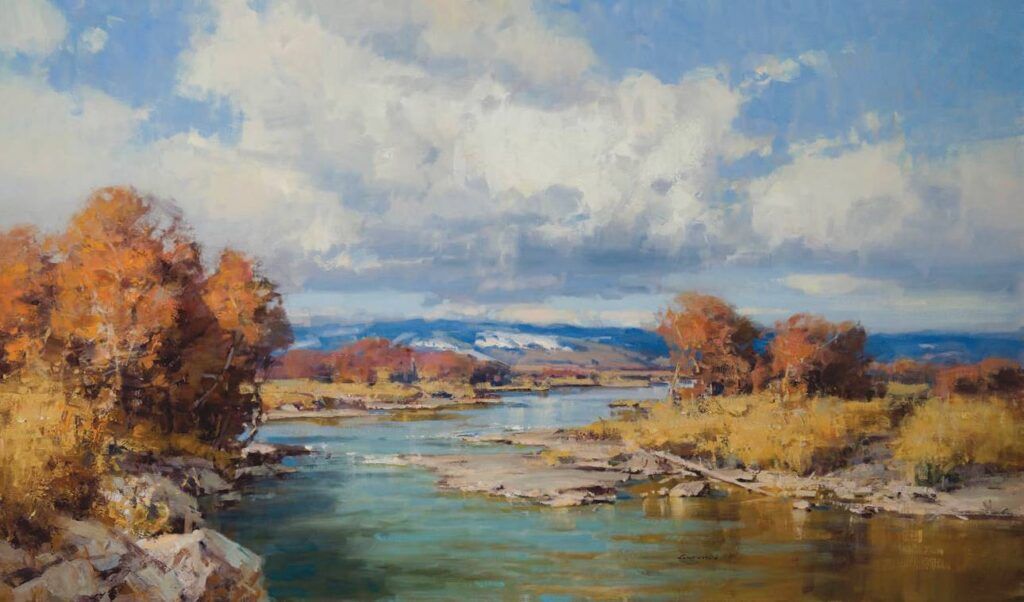
Landscape oil painter Scott Christensen’s career exhibition list stands as an impressive testament to the success of his artistry. Vital relationships with the National Academy of Western Art, Prix de West Invitational and National Museum of Wildlife Art, to name just a few, have served to keep his work in the public eye.
In 2018, he partnered with artist Quang Ho for the “East/West Visions” exhibition at the Booth Western Art Museum. This may seem like the culmination of 40 years at the canvas, but Christensen is never one to rest on his laurels. His studio bears witness to a work ethic that’s tireless and methodical, and to a discipline derived from a background in athletics and the rigorous training that’s associated with sports.
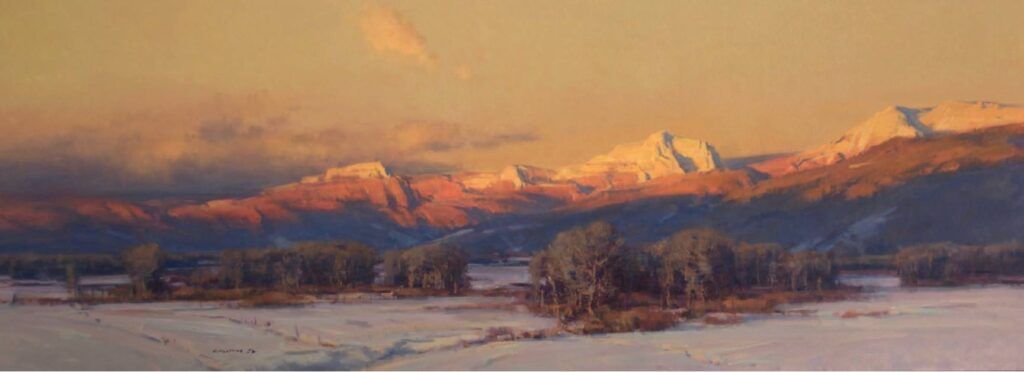
Just as established is the artist’s reputation as an instructor. The property on which Christensen Studio sits in Victor, Idaho, is a destination for artists who are seeking intense study. In a workshop model that allows for personal attention, this alpine setting is a dream come true for landscape artists.
Christensen says the manner in which he observes the landscape develops continually and that finding ways to work outside his comfort zone is key to his continued growth as a painter. He’s a voracious learner who brings his life experience to the canvas as a matter of process. His long-held connection to nature as his subject doesn’t hamper his ability to see it continually through fresh eyes.
Related: The Importance of Repetition as an Artist
Developing an Artist’s Eye
Christensen started playing football as soon as he could walk. He draws a direct parallel from the foundational discipline he laid on the gridiron to his artistic practice, and credits his defensive position of safety to the development of his visual acuity.
As a safety, a football player must have a heightened sense of peripheral vision while at the same time reading depth of field in order to constantly anticipate movement. What we see in our periphery is primarily subconscious. Having the ability to see more, and do so consciously, is a specialized skill. By the time Christensen was playing safety at a collegiate level, he’d been nurturing a unique visual sense for 20 years.
During his senior year of college, a spinal injury brought his time on the football field to an abrupt and devastating end. He moved into art for solace and took up fly fishing at almost the same time. With waders instead of cleats, he immersed himself in another environment rich in depth of movement. The added ingredient was the shifting light found only in nature. It wasn’t long before another visual evolution took hold. Now, even after 40 years working as an artist who’s an avid outdoorsman, his visual sense continues to develop.
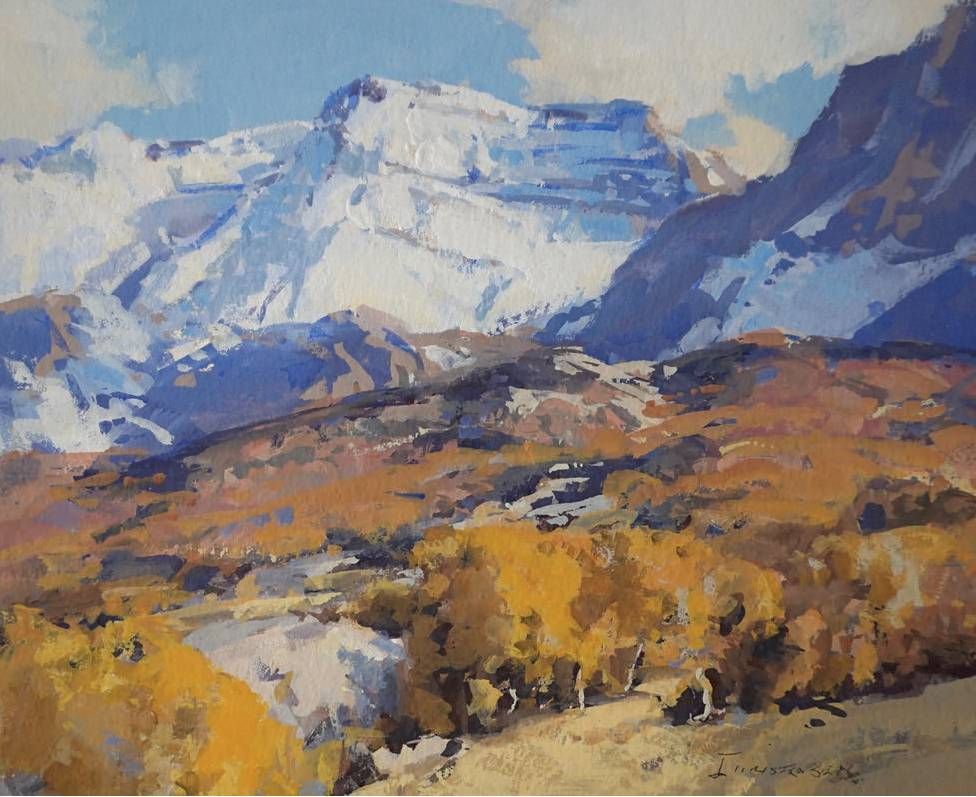
“There’s a lot out there. You can’t paint every stick,” Christensen says of his keen prioritization of light and shape over detail. This is easily seen in the studies he executes en plein air (see gouache studies, opposite). Used in the studio to inform his larger oil work, these visual notes, laid down in abstract shapes, are integral to his recall. “My brain doesn’t hold it all, so I have to take it in chunks as you would in writing,” says the artist.
To a less developed eye, trying to choose where to begin and which details to eliminate may seem a crippling proposition. Christensen often uses a photographic illustration of crisp detail versus blurred mass as a tool to shape this concept for students, encouraging them to “unsee” in a more intelligent way.
Christensen is committed to his plein air studies and rarely uses photography to inform his studio work. For him, it’s all about truth in color, as a camera lens doesn’t perceive color with the same accuracy as the naked eye. A landscape artist must develop the ability to see further by identifying color without the aid of a camera and, at the same time, see less detail in order to get the job done.
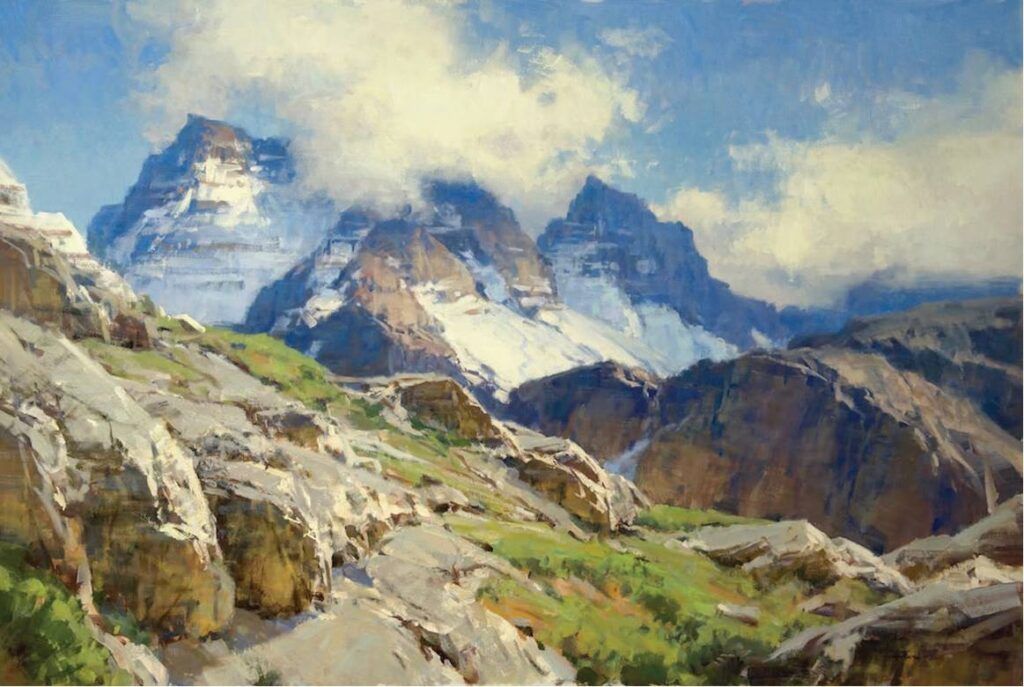
Choose Your Discomfort Level
Like most artists, Christensen knows artistic growth can be painful. “If you’re an artist, you should feel that way because you’re never going to feel like you have a grasp on something you can do better,” he says, “and by better, I don’t mean more detailed.”
Christensen encourages students to ask questions above all else. “It’s a feel that you’re looking for. What do you want out of it most? Constantly developing your perception is key,” he says, stressing that the transformation that results from living with discomfort is a pay-off every artist should be seeking.
. He did so on the advice of friend and artist Larry Moore, author of Fishing for Elephants: Insights and Exercises to Inspiring Authentic Creativity, but also because of John Singer Sargent. Christensen takes inspiration from many masters, but when it comes to Sargent, a particular kinship is felt.
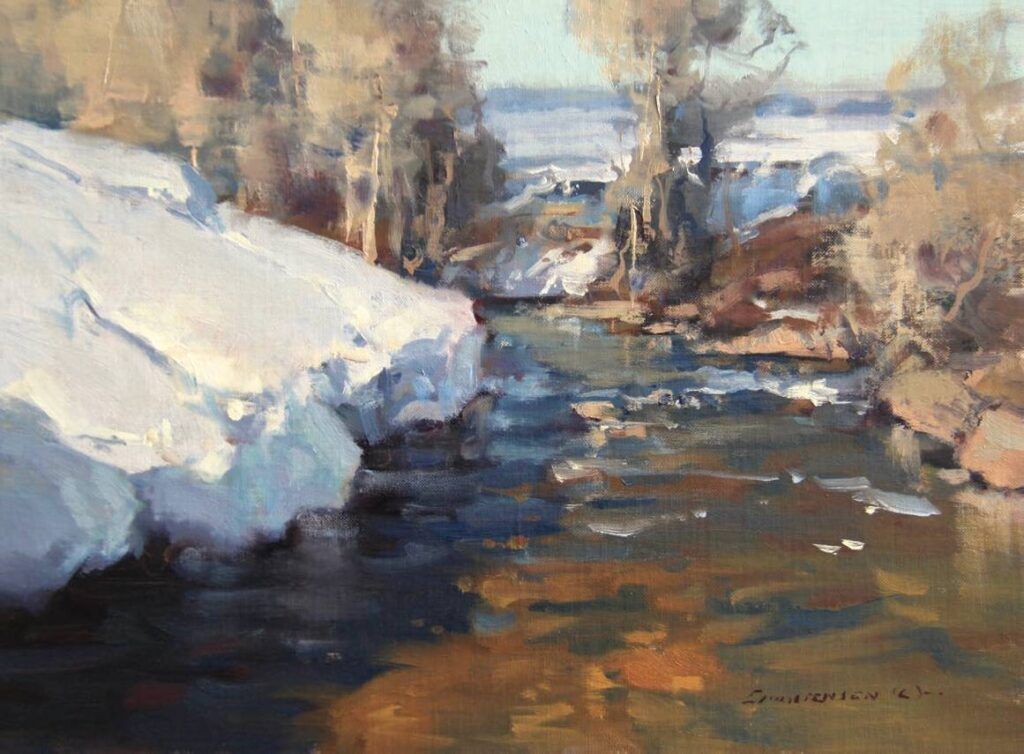
“Sargent experimented and was doing what he loved. He loved being out there. You can tell, especially when it came to his watercolors, and that’s why I’ve been doing the gouache studies,” says Christensen. “I kept looking at these watercolors of Sargent’s and wondering how he got there. He did it with light. What I mean by this is that you can get body in your color so you can manage it and create a study in a different way. Sargent created studies in the middle values mostly. He stayed to middle values and would then increase darks and lights. The standard talk here is that oil painters paint from dark to light, and with watercolor you go from light to dark. Sargent stayed closer to the middle, most of the time.”
In early 2020, Christensen began to use gouache studies to inform his large-scale oil work after hundreds of hours of collecting data in the field. “I was so used to painting in oils, it made me reframe my thinking and take a different approach. It’s starting to help me see differently again. I’m always pushing for that,” says the artist.

In Pursuit of Why
Christensen is familiar with the depths of discouragement that can envelop an artist. “It’s a real feeling to ask, ‘What am I doing?’ to say, ‘This isn’t worth anything. It’s just a painting on the wall,’ yet those depths lend value to defining the why behind the artist’s own pursuit.” Without that clear definition, Christensen maintains that artists will continue to feel lost.
“I had to go through that whole study of ‘nothing is more useful than the useless,’ before I finally realized that what I want is to bring intrinsic value to what I’m trying to show you. I want to show you what’s aesthetic to me. I can’t care if you like it or not, because then I’d be chasing the wrong thing. You have to feel like I’ve been there. I want you to experience this.”
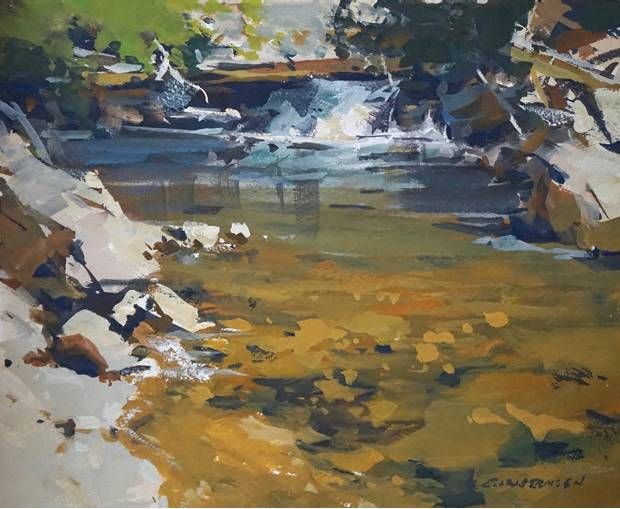
Christensen constantly seeks to absorb many genres of art and leans on music as a core tenet of inspiration. He is in awe of the work that Johann Sebastian Bach put into translating so many of Vivaldi’s pieces to keyboard, which enabled Bach to think in more musical terms. This oil painter is an admirer of those who face their art as a manner of experimentation, if only to learn how to take it to new heights.
“Some of the problems we don’t want to face are right in front of us. You don’t want to ask that question because you don’t want to face how to answer it,” he says. Pursuing the “why” behind the work is something Christensen encourages every artist to prioritize.
Characterizing the Work
What gets Christensen excited about his work now? “I look at any one thing in a work. I want to change the composition, the temperature, the light versus the shadow,” he says. “It just gets down to a whole bunch of questions—and good answers to tough questions is what I spend my time on. I’m way more excited about painting because of that. Just to have different answers to things.”
This isn’t a surprise coming from an artist who possesses innate ability as a teacher and problem-solver, but listening to him explain the revelations that nature still provides to his trained eye tells a more colorful story.
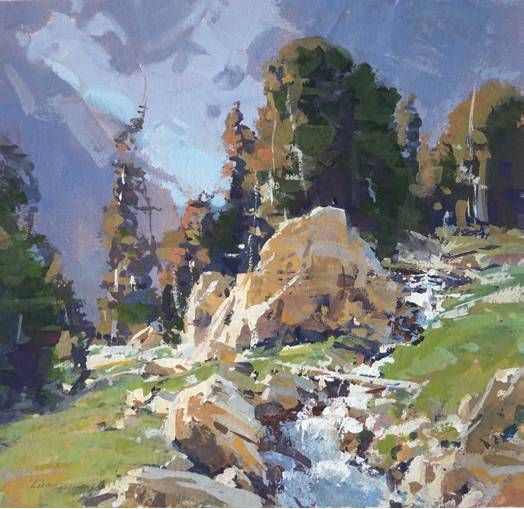
“I was teaching in Darby Canyon, in Teton Valley, Idaho, one day, and I flipped out over this Indian red. I hadn’t seen it in years. I’ve gone to the same place to paint for years in a row, and I missed it. Until I actually felt that connectivity, I never saw it,” he says. “I know what happens to color when it goes through yellow to red to blue and is transitioning, but the transition in between—I had never seen this red inside of the whole connected thing. Indian red, Venetian red—I started introducing them into my palette. Until I see it, I don’t want it.”
In order to see properly, Christensen invests in the work first. He has made that investment the mark of his career. The benefit comes through not only on his canvases, but also in his aptitude for sharing what it’s like to grow deeply while in the process of creating.
This feature was originally published in the November 2020 issue of Artists Magazine.

Scott Christensen is a highly respected landscape painter known for his understanding of light, ability to achieve pure color and reverence for nature. He has received many honors and awards, and his work is in the permanent collection of the Craig Thomas Visitors’ Center in Grand Teton National Park. His paintings have also been published in the National Academy of Western Art and exhibited at the National Museum of Wildlife Art, in Jackson Hole, Wyo.; the Salmagundi Club, in New York City; Autry Museum of the American West, in Los Angeles; Kimbell Art Museum, in Fort Worth, Texas; Prix de West and Gilcrease Museum, both in Tulsa, Okla.; and the Denver Art Museum, among others.
To learn from this talented artist and instructor, visit Adventure of Painting.
You Also Might Like
The Index Card Art Project: Paint for 31 Days
[ad_2]
Source link







